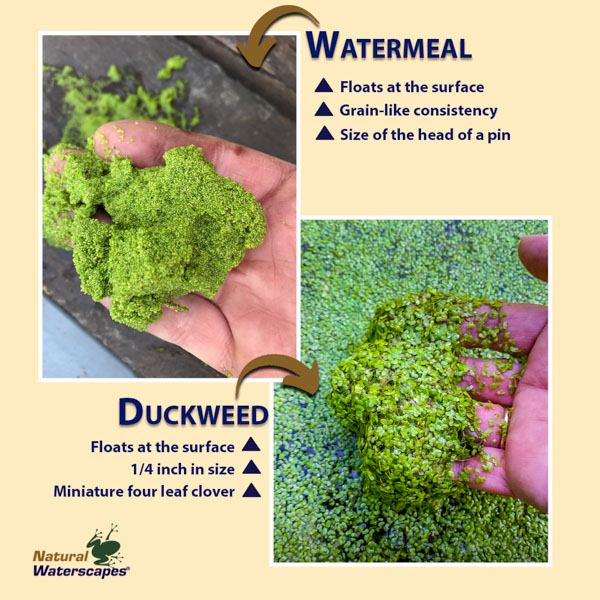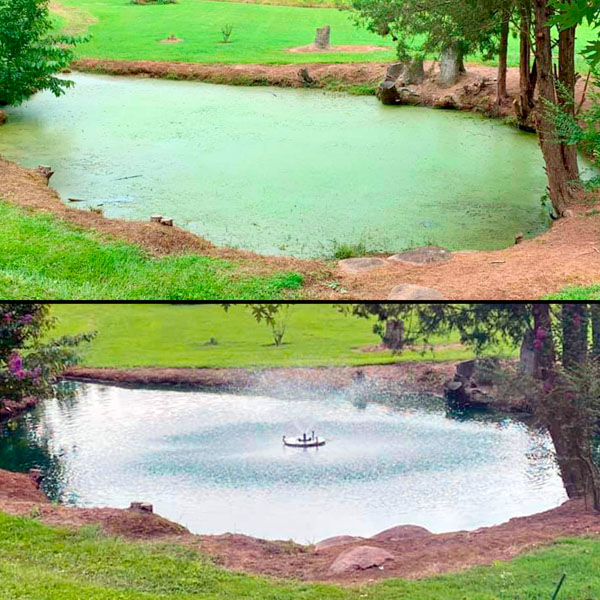Duckweed & Watermeal– Managing Floating Pond Weeds
Duckweed vs Watermeal
Before selecting an herbicide treatment, confirm the weed species. Pull a sample from the pond. Both duckweed and watermeal can be confused with surface algae. Duckweed is about ¼- ½” across and has 3-4 leaves, making it look like a miniature 4-leaf clover. Watermeal is round/oval shape and the size of a pin head. Ponds can have duckweed and watermeal growing together.

Where does duckweed and watermeal come from?
These pond weeds are commonly found throughout the United States. Due to their size, it is easy for a plant to attach to the body of waterfowl visitors traveling from pond to pond. Once relocated, the plant begins to multiply. Each plant is able to create a sister plant every 24 hours. After 30 days, 1 harmless plant is now over 1 billion individual plants (literally).
When water temperatures drop in fall/winter, plants mysteriously disappear. Duckweed and watermeal go dormant and drop to the pond bottom. They re-emerge to the surface in spring when the water temperature increases! Due to the rapid growth, duckweed and watermeal are difficult to manage.
Surface Weed Treatment Options
Duckweed Destroyer Pack which consists of Cutrine Plus, Harvester, and AquatiStick is our treatment "cocktail" that is fast and effective. This is a rapid treatment, so results will be seen within 48 hours. Any vegetation that doesn’t turn yellow/brown within 48 hours should be re-sprayed. Leaving any living duckweed or watermeal will lead to re-growth.

Sonar AS or Sonar RTU, as well as Propeller are other treatments available for complete surface treatment of duckweed and watermeal. These both yield excellent results, but can only be used in ponds with little to no flow through.
It is vital to have aeration when treating the pond with chemicals. As weeds die, they consume oxygen from the water. Increasing oxygen levels will lower the risk of a fish kill during chemical application.
Make sure you know your pond size! Proper dosing is important. If you don’t know your pond size- our experts can use our mapping software to determine the surface area of your pond.
How long will this pond treatment manage the weeds?
These treatments kill the current growth that is present at the time of application. If there is a nearby pond with duckweed or watermeal, it is possible for re-introduction at some point. If any new growth is spotted, treat them immediately or remove them with a skimmer net before they have a chance to multiply.
Note: Pond dye will not help control duckweed or watermeal as it does for algae or submerged weeds.
